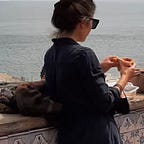The trick of tricking
Think Piece
We don’t need more businesses; we need businesses to do better.
A few years ago the H&M Group announced the launch of the ARKET brand, it was marketed as more sustainable — “to democratise quality through widely accessible, well-made, durable products, designed to be used and loved for a long time.” I will just get to my point — what total B.S. My observation for this think piece is not about the clothing and how it’s made. My observation is in the bigger picture.
H&M is one of the handful of clothing groups selling under a number of brand names. The piles of clothes that are made, never used, thrown away is a simple reflection of excess. Too many clothes being made and too few buyers. The creation of ARKET is simply another brand from H&M that is adding to this excess.
Now understand that in this think piece I am not getting into statistics, I am not making specific claims but simply providing the bigger picture and some of the smaller elements that contribute to it. There are indeed many differences across the retail-manufacturing world beyond this piece.
Let me get to the big picture and the small part ARKET plays a role in why this is all B.S.
When H&M made this new brand announcement I was dumfounded by the fact that H&M was basically adding to the already out of control production and waste of clothes. Along with their ridiculous number of clothing collections for H&M, COS, Monki, Weekday, and & Other Stories, they’ve added a new brand ON TOP.
Stop adding more to the already existing problem.
This is what is totally wrong but was a very good trick in tricking. The creation of making the buyer feel good to buy from a ‘sustainable’ brand when in fact the creation of another clothing line on top of what already exists is not at all sustainable.
So what could they have done to really demonstrate a consideration? They could have replaced one of their brands with ARKET. By doing so they would be probably maintaining or slightly reducing the number of collection pieces produced.
I believe we can use what we have to do things better. H&M has everything they need to make better choices that are not covered in B.S. In addition, my looking at the demography of their brands, there is room to even remove one brand but that is too large a step for the time being. For the moment my thoughts are on the smaller steps of replace and reduce as the starting point.
There is something I have also observed within the environmental discussion and that is the word ‘sustainability.’ Seeing the decisions and behaviours being associated with this word brings up the issue of what does it actually mean. In this case, simply creating a brand that produces a bit more sustainably than the other brands is not addressing the root of the actions that are needed to be sustainable. You’re only tricking yourself and B.S-ing others.
